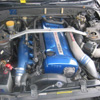Oil Numbers.. And What Do They All Mean?
Announcements
-
Similar Content
-
Latest Posts
-
By The Skyline Guy r34 · Posted
To install new hicas ball joints do i really need to pay for the Frenchys hicas install tool? Or can i use something like this? https://www.ebay.co.uk/itm/395524214497?_trkparms=amclksrc%3DITM%26aid%3D1110018%26algo%3DHOMESPLICE.COMPLISTINGS%26ao%3D1%26asc%3D281023%2C280568%2C280618%26meid%3D4018390c9ba246f794ed58b8b19ec80a%26pid%3D101430%26rk%3D4%26rkt%3D12%26sd%3D205160403603%26itm%3D395524214497%26pmt%3D1%26noa%3D0%26pg%3D2332490%26algv%3DCompVIDesktopATF2V2AndXaiHotClickWithCompV6WithEbertNRTRecall%26brand%3DUnbranded&_trksid=p2332490.c101430.m2460&itmprp=cksum%3A3955242144974018390c9ba246f794ed58b8b19ec80a|enc%3AAQAKAAABMDJfxvEKz%2FWsdyy97PIVwAhtkTIJPGKp%2Bu7TYjjsvNO4eN9duTRR%2FSVFYts6UXmN8tSK75ee0LypjLaKkPNQ2gkat4DyNLnViXKBVpI1%2B5fAYfWiGJa5QlqEPseqbSJUD9gVo2KSXbnmQjuPDJH4flTH2bOLSO%2FvMrLjgPDIc7vGrlKtoSauZb0q%2Fu43zLR0J8tg1z5dPMV%2FcHtnqRYXb7R7V8G%2FrQGhpY1sWtGJXc4TWc78ccs69UXnMiCqqd05ITd%2BY7Vwbq5Uzd%2FWhmiZCytO66vqDnbJn03qN%2Bin0ImF5sgbgu9uD45tXNN8cr4IWfqzIEEpaKcgqilwbTDxMkIQ4sGcgz7IhYONV017vE6P9ksZ7n%2FFVwgs3kAfMb0%2FLGjwaqhwo0yilTIjGHg9mwU%3D|ampid%3APL_CLK|clp%3A2332490&itmmeta=01JMR0X9WMB8DPEX82P2P3CRXN -
I would be lying if I said I wasn't interested in what MCM were going to do with the NC I really enjoy their banter and occasional collaborations (like Alan from TSF, Ben from BCW, or any of the Haltech guys throwing around their experience), and I have probably watched everything they have put out
-
Not yet, we basically drove it to a private road, got the logs and drove it straight back. I think I need a new passenger seat belt after the mrs squeezed the life out of it.
-
Sounds insane! 🤤🤤🤤 Do you have any vids of it driving? A flyby would be nice!









Recommended Posts
Create an account or sign in to comment
You need to be a member in order to leave a comment
Create an account
Sign up for a new account in our community. It's easy!
Register a new accountSign in
Already have an account? Sign in here.
Sign In Now